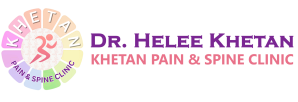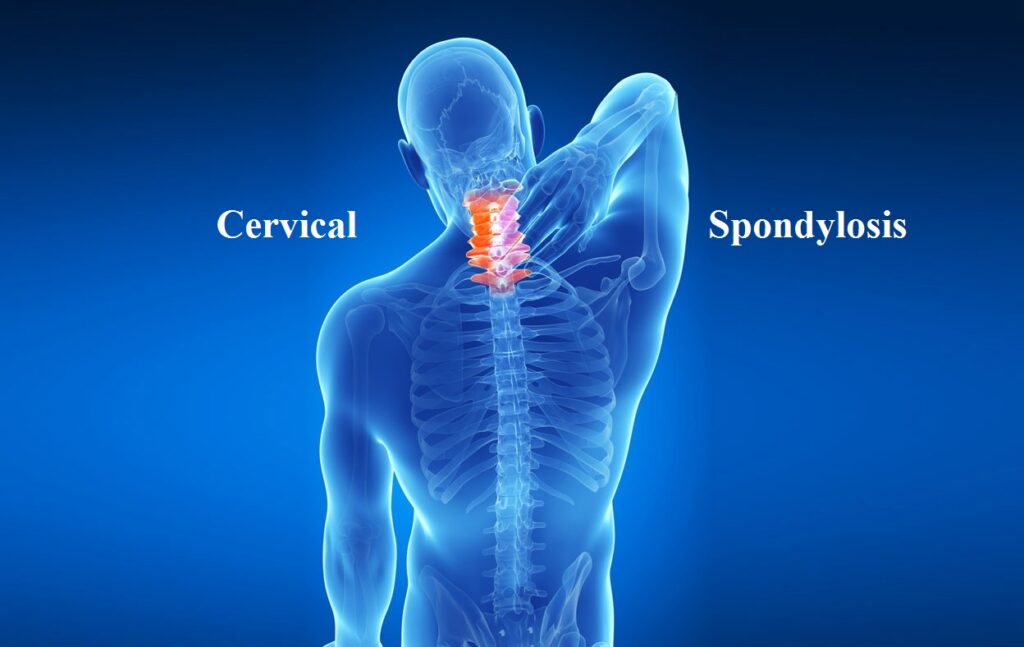What is Cervical Spondylosis?
Cervical Spondylosis, also known as cervical osteoarthritis, is a common age-related condition affecting the cervical spine (neck). This condition results from the wear and tear of the cartilage and bones in the neck, leading to pain and stiffness.
Symptoms of Cervical Spondylosis
The symptoms of cervical spondylosis can vary widely but commonly include:
- Neck Pain and Stiffness: Persistent pain and stiffness, especially in the morning and after periods of inactivity.
- Headaches: Often starting from the neck and moving to the back of the head.
- Radiating Pain: Pain that spreads to the shoulders and arms. Explore symptoms
- Numbness and Tingling: In the arms, hands, and fingers.
- Weakness: In the arms and legs.
Causes of Cervical Spondylosis
The exact cause of cervical spondylosis is primarily age-related wear and tear. Factors that contribute include:
- Bone Spurs: Overgrowths of bone that can press on the spinal cord and nerves.
- Dehydrated Discs: Discs in your spine can shrink, leading to bone-on-bone contact.
- Herniated Discs: Cracks in the discs that allow inner cushioning material to slip out.
- Injuries: Past neck injuries can accelerate aging.
- Overuse: Due to work or lifestyle that places extra stress on your neck. Learn more about causes
Diagnosing Cervical Spondylosis
Diagnosis typically involves:
- Medical History: Discussing your symptoms and medical history.
- Physical Examination: Assessing your neck’s range of motion, reflexes, and muscle strength.
- Imaging Tests: X-rays, MRI, or CT scans to get detailed images of the cervical spine. Learn more about diagnosis
Treatment Options for Cervical Spondylosis
While there is no cure for cervical spondylosis, various treatments can help manage the symptoms and improve quality of life:
- Medications: Pain relievers, anti-inflammatory drugs, and muscle relaxants. Discover medication options
- Physical Therapy: Exercises designed to improve posture, flexibility, and strength. Learn about physical therapy
- Heat and Cold Therapy: Applying heat or cold packs to reduce pain and inflammation.
- Interventional Procedures: Techniques such as epidural injections and nerve blocks. Explore interventional pain procedures
- Lifestyle Modifications: Maintaining good posture, staying active, and using ergonomic furniture. Explore lifestyle tips
- Surgery: In severe cases, surgical intervention may be necessary to relieve pressure on the spinal cord and nerves. Read about surgical options
Living with Cervical Spondylosis
Living with cervical spondylosis involves managing symptoms and working closely with healthcare providers to develop a personalized treatment plan. Discover personalized care
Conclusion
Understanding the symptoms, causes, and treatment options for cervical spondylosis can help you manage this condition effectively. By making lifestyle changes and seeking appropriate treatments, you can maintain a good quality of life.
Khetan Pain & Spine Clinic – Dr. Helee Khetan
- Address: S K Complex, opposite Reliance Trends, beside Union Bank (Aadhaar Seva Kendra, Betiahata, Gorakhpur, Uttar Pradesh 273001
- Phone: +91-8957998855
- Email: khetan.algiatry@gmail.com
For more information on various conditions and treatments, visit our website.


Pingback: medicament kamagra sans ordonnance comprime l alcool
Pingback: enclomiphene non prescription in canada
Pingback: androxal UPS SHIPPING COD
Pingback: discount flexeril cyclobenzaprine usa mastercard
Pingback: cheapest buy dutasteride buy uk no prescription
Pingback: online order gabapentin non prescription online
Pingback: how to buy fildena cheap uk buy purchase
Pingback: discount staxyn generic london
Pingback: online order itraconazole generic work
Pingback: avodart saturday delivery
Pingback: get rifaximin canada purchase
Pingback: how to order xifaxan without a script
Pingback: koupit levné kamagra bez lékařského předpisu